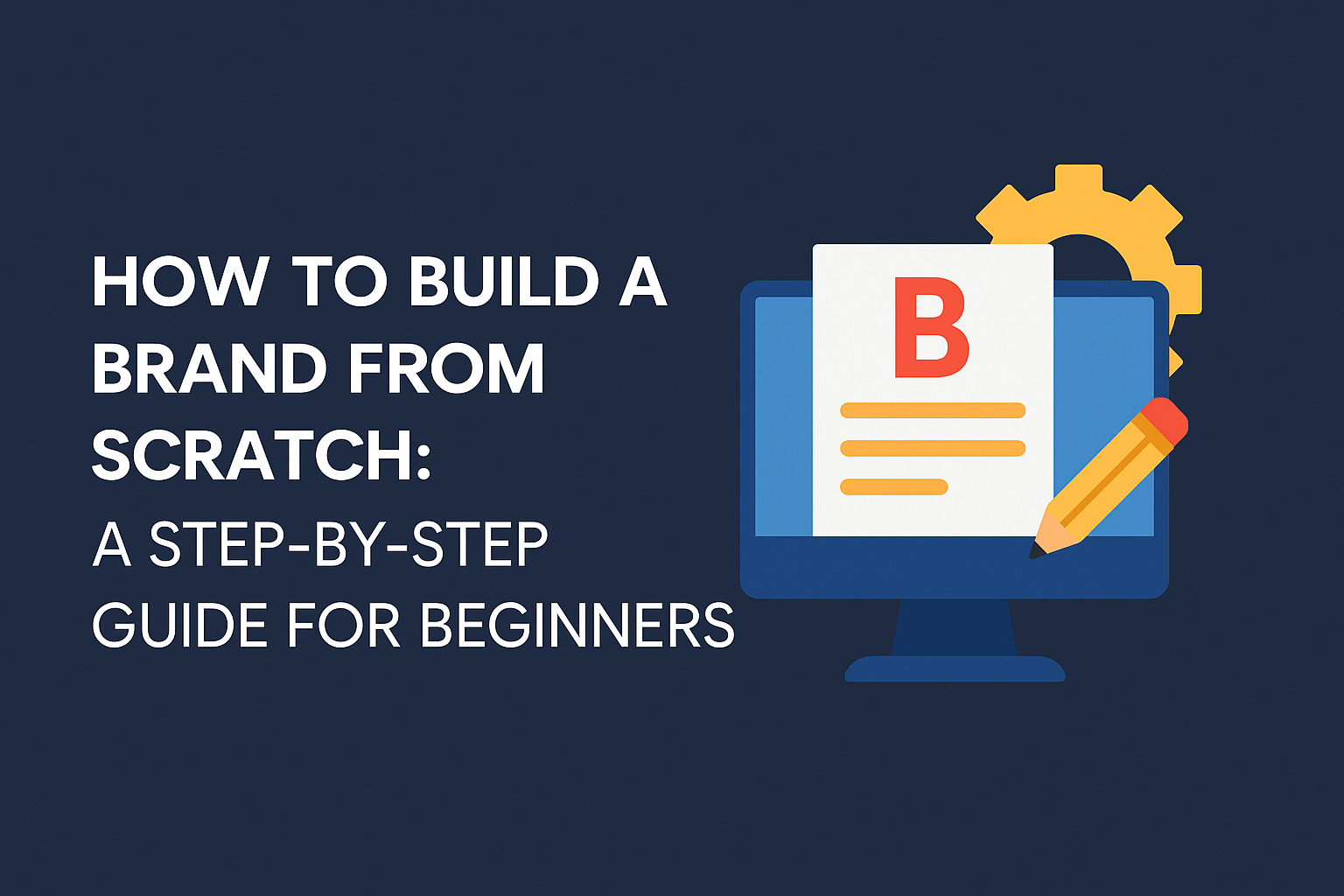Introduction
Building a brand isn’t just about having a nice logo or a catchy name — it’s about shaping how people see, feel, and trust your business. In today’s crowded digital space, a powerful brand can help you stand out, gain loyal followers, and drive long-term success.
Whether you’re launching a startup, running a solo service, or building an online presence, this guide will walk you through everything you need to know to build a strong, professional brand from scratch.
Step 1: Define Your Brand Purpose
Before you design anything, ask yourself: Why does my brand exist?
Every successful brand starts with a purpose — a clear reason for being that goes beyond just making money. It’s what connects you to your audience on a human level.
Ask yourself:
- What problem am I solving?
- Who am I helping?
- Why does it matter?
Pro Tip: Write your brand mission in one sentence. Keep it clear, emotional, and meaningful.
Example:
- “At BrandWeb, we help creators and businesses grow by turning great ideas into powerful online brands.”
Step 2: Know Your Audience
You can’t speak to everyone — and you shouldn’t try. A strong brand is built for a specific audience, not a general one.
Build a customer profile:
- Age range, interests, job/industry
- Problems they face
- Where they spend time online (YouTube, LinkedIn, Instagram?)
Create a tone of voice that fits your audience. Tech founders may prefer a direct, confident tone, while lifestyle readers want something friendlier and casual.
Pro Tip: The clearer you define your audience, the stronger your brand connection will be.
Step 3: Choose a Memorable Brand Name
A great name makes your brand easier to remember, easier to share, and easier to trust.
Characteristics of a good name:
- Short and easy to pronounce
- Unique and not too generic
- Matches your tone and vibe
Examples:
- Tech: Notion, Slack, Zapier
- Creative: Canva, Skillshare, BrandWeb
Pro Tip: Check domain availability and social media handles before you commit.
Step 4: Design a Visual Identity (Logo, Colors, Fonts)
This is where your brand starts to come to life.
Key components:
- Logo: Keep it clean, scalable, and symbolic. Text + icon works well.
- Color palette: Choose 2–4 core colors that reflect your brand’s personality. Use color psychology (see our last post!).
- Fonts: Pick 1–2 fonts that are readable and professional.
Pro Tip: Keep your visuals consistent across your website, social media, and emails.
Tools to try: Canva, Adobe Express, Looka, Brandmark
Step 5: Craft a Strong Brand Message
Now that your brand looks good — how does it speak?
Key elements:
- Tagline: A short phrase that sums up your brand value (e.g., “Think Different” or “Create with Confidence”).
- Voice and tone: Is your brand casual, corporate, bold, or friendly?
- Brand story: Share why you started and what you believe in. People trust people — not faceless businesses.
Pro Tip: Use storytelling to make your brand memorable and human.
Step 6: Build an Online Presence
Your brand needs a home. Start with these essentials:
- Website: This is your digital HQ. Keep it clean, mobile-friendly, and aligned with your brand style.
- Social Media Profiles: Choose platforms that match your audience. Don’t try to be everywhere.
- Email Address & Contact Page: Make it easy for people to reach you and trust you.
Pro Tip: Add an “About” page that shows your face, values, and brand journey.
Step 7: Stay Consistent Across Every Touchpoint
People build trust through repetition. If your Instagram looks different from your website, you lose credibility.
Keep consistent in:
- Logo usage and image styles
- Color schemes and font sizes
- Messaging, tone, and content themes
Pro Tip: Create a simple brand guide PDF that outlines your logo, fonts, colors, tone, and usage rules.
Step 8: Deliver Value Before You Sell
Today’s best brands educate, entertain, or inspire — they don’t just sell.
Ways to deliver value:
- Start a blog (like BrandWeb!)
- Post tutorials, tips, or facts on social media
- Offer free resources or downloads
Pro Tip: The more value you give, the more your audience will trust and promote you.
Step 9: Evolve Based on Feedback
Branding is not one-and-done. You’ll grow, evolve, and improve over time.
Ask your audience:
- What do they love about your content?
- What could be better?
- What do they associate your brand with?
Pro Tip: Small tweaks (like a new font or tagline) can refresh your brand without losing identity.
Conclusion: Branding is a Journey, Not a Logo
The best brands are built on purpose, refined through strategy, and powered by consistency. Whether you’re starting with nothing or rebranding your side hustle, remember: branding is the emotional connection people have with your business.
When done right, your brand becomes your most powerful asset.
So take your time, follow these steps, and create something that feels real, trustworthy, and unforgettable.
Ready to level up your brand?
Subscribe to BrandWeb.net and get weekly blogs, tutorials, and real-world strategies for branding that works.
Written by Zain Ashraf | BrandWeb.net

